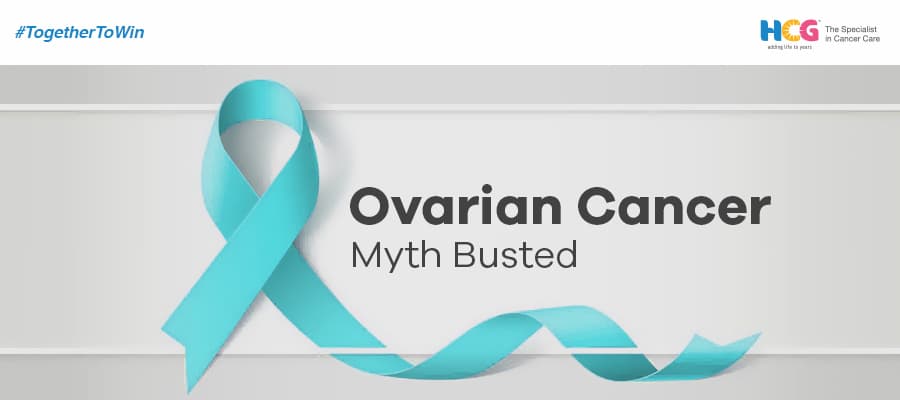
25 Jan, 2022

25 Jan, 2022
Ovarian cancer is a type of cancer that begins in the ovaries and is the third most commonly detected cancer amongst Indian women. Ovarian cancer often goes undetected until it has spread within the pelvis and abdomen. At this late stage, it is difficult to treat. The lack of awareness about ovarian cancer often leads to fear, confusion and, major misconceptions. It is important to stay away from such misconceptions to ensure you can detect the disease on time. Catching ovarian cancer early is key to better survival outcomes. Here are some major myths and misconceptions about ovarian cancer:
Symptoms of ovarian cancer can often feel like other common sensations in your body. However, there are certain changes in your body that indicate you should talk to a doctor. While the symptoms may be subtle, many women have reported a change in how they’re feeling on most days. Feeling bloated or too full could be an important warning sign. Unusual cramps or a new sense of heaviness are other indications that you should look out for. Irregular bleeding between periods, change in bowel habits, ache in the back and abdomen for over two weeks should alert you. Always keep a watch on changes in your body as they could mean the difference between early and late detection of ovarian cancer or another underlying cause.
Ovarian cysts and ovarian cancer are not the same things. Cysts in your ovaries are common and normal and can be cured with medical attention. Most ovulating women form cysts, small sacs filled with fluid, in their ovaries every month. These are called functional cysts and are benign. They usually disappear on their own. Other types of benign cysts can form around the ovaries too, and often go away without treatment. Ovarian cancer on the other hand, develops on the outside surface of the cells. It can also develop in the cells that form eggs; the cells that create estrogen and progesterone, or the fallopian tubes.
This is a myth. Only one-tenth of ovarian cancers are attributed to family history. Having certain genetic mutations like BRCA1 or BRCA2 does significantly raise the risk, but those mutations are responsible for a small percentage of ovarian cancers. Common risk factors of ovarian cancer include age and having endometriosis.
A large percentage of ovarian cancers are detected in late stages which usually has worse outcomes. This is one of the reasons women are afraid of seeing their doctor, for fear of a diagnosis. Ovarian cancer can be cured, especially when it is detected early. Early-stage has a good prognosis. New targeted therapies are helping women with late-stage ovarian cancer live longer, and patients who don’t respond to one of the therapies may have success with another. Early detection is key to better outcomes.
A pap smear does not detect ovarian cancer. It only detects cervical cancer. There is no test to detect ovarian cancer in the early stages. For a lot of women, the cancer is detected only at a later stage when it has spread to nearby tissues and organs. This is why it is key to look out for warning signs and symptoms.
https://www.mskcc.org/news/5-myths-about-ovarian
https://www.everydayhealth.com/ovarian-cancer/myths-versus-facts/